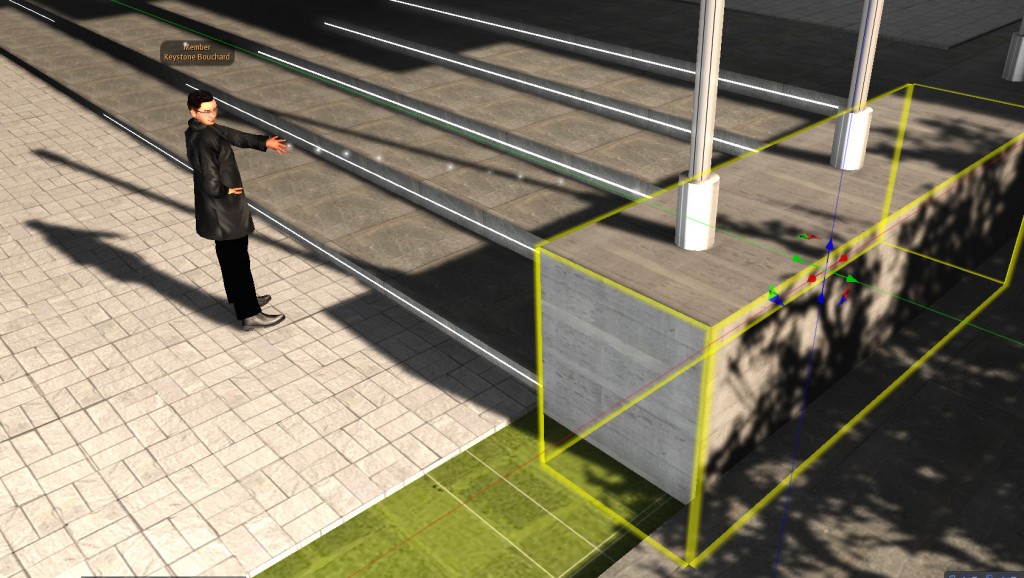For the longest time, I had given up on the possibility of using shadows persistently in Second Life, given that it crashed my viewer so often it wasn’t worth the hassle. But since enabling shadows in the new viewer 2.0, I haven’t crashed yet!

While shadows definitely enhance the overall visual quality of SL, what I found more interesting is the impact it has on the actual building experience itself. When you rez and stretch a prim with shadows enabled, it has a much deeper visual impact – more like working with physical materials that have a greater weight, or sense of presence than they do without shadows. For me, it definitely has an impact on the realtime design experience – through a deeper sense of depth and space than non-shadowed prims convey.

I had argued in previous posts that sketching with prims in a virtual world is a much more powerful and effective process than sketching with pen and ink, and I think the introduction of shadows to the prim-sketching process makes it even moreso. When you sketch with pencil or pen on paper, you aren’t able to perceive the depth or illumination of your subject until you fake it with sketched shadows – which is no more than an approximation.

Once you’ve learned how to build with the in-world modeling tools, I would argue that sketching with prims in Second Life is quicker than sketching by hand, and when you’re done – you have a dynamic, immersive virtual model with realtime shade and shadows that can be copied, modified, packaged up, shared and experienced by anyone, anywhere in the world.
The prim is (still) mightier than the pen.


